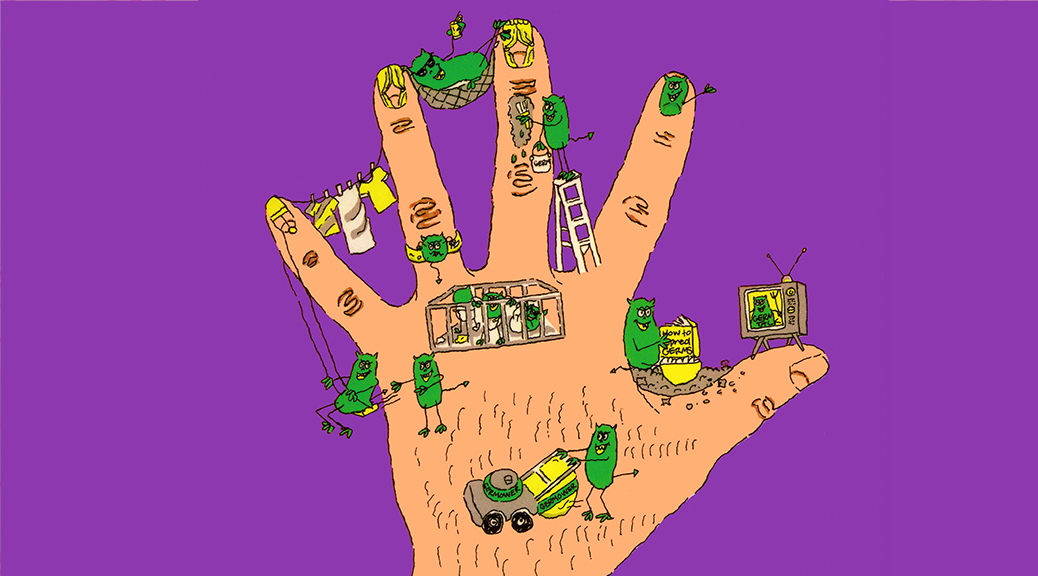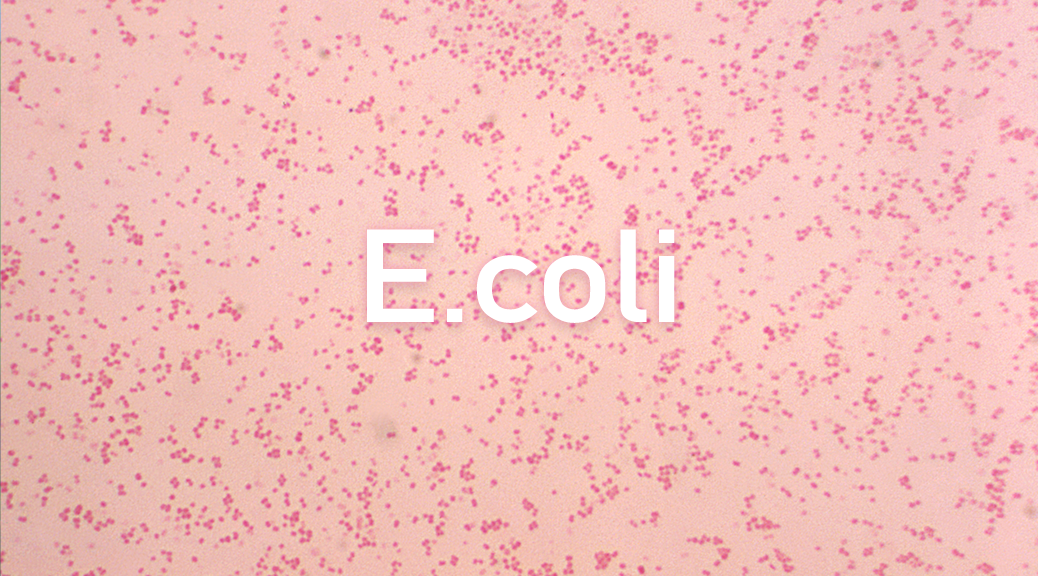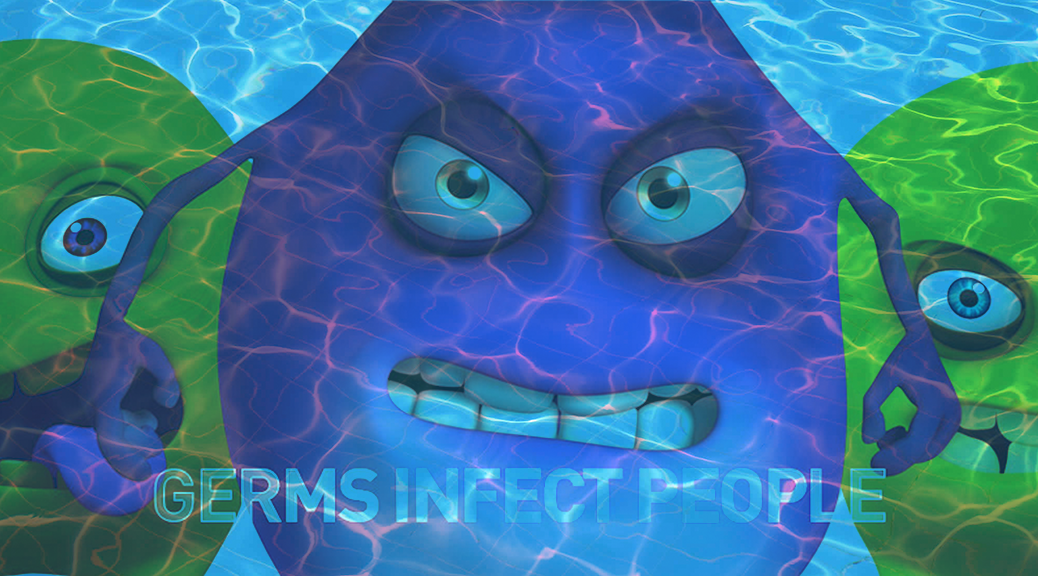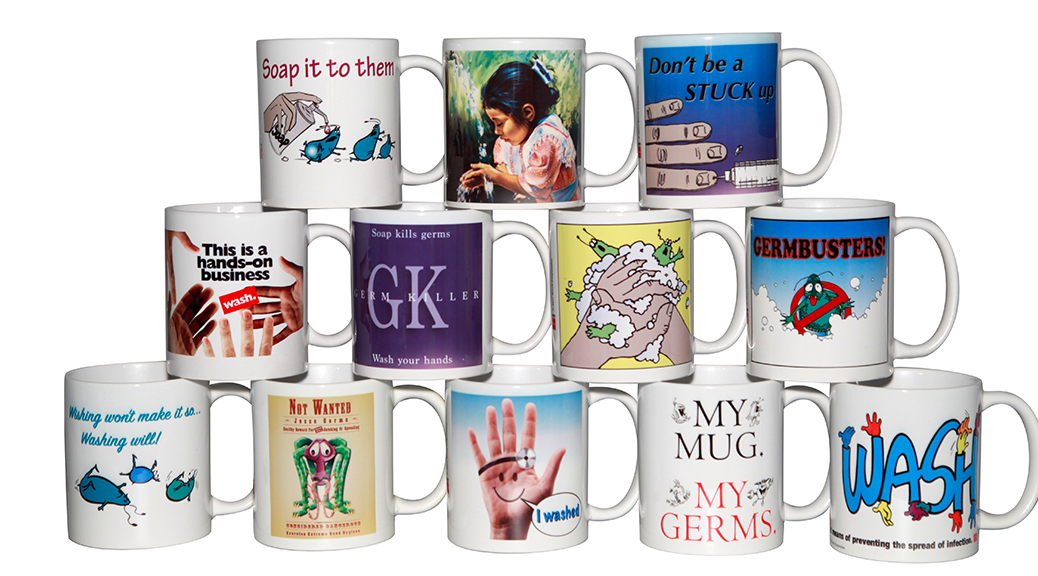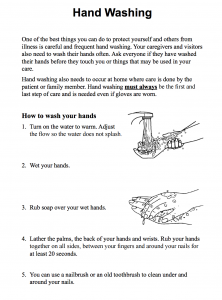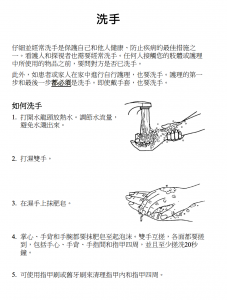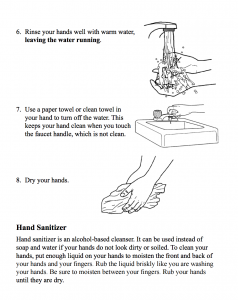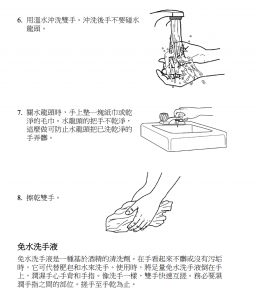Certain events, actions or circumstances can make handwashing more important. For example, after being in public places, or handling often-touched objects like handrails and doorknobs, before preparing food, before eating and after using the rest-room. When possible it is best to avoid touching moist areas of your body such as eyes, nose and mouth unless you first wash your hands. Further, it is advisable to wash your hands after touching those areas. Germs most often travel by climbing aboard hands until they find a good opportunity to jump off into food we consume or directly into the portals of our bodies (mouth, nose and eyes etc.). Before helping these bugs find the greener pastures and making us sick send them down the drain.
Tag Archives: hand hygiene
Prevention always starts with good hand hygiene
Searching for the cause of an E Coli outbreak can send investigators in many different directions. This is a reminder that good hand hygiene practices and proper food preparation are of utmost importance. E Coli can be found in contaminated soil or water but it can also be spread through infected people. Germs that make us sick are everywhere and while we cannot always control where or how our food is grown we can control how we prepare it and make sure our hands are clean when doing so. Check out these links to the latest news on the Romain lettuce E Coli outbreak and the CDC which both reference person-to-person contact and the importance of hand washing.
- New York Times: Four More People Die From Tainted Romaine Lettuce
- CDC.gov: Multistate Outbreak of E. coli O157:H7 Infections Linked to Romaine Lettuce
Discount code ‘SUMMER’ good for 10% Off! extended to June 30
Germs Don’t Take Summer Vacations
Phew! We made it through the worst of the cold and flu season! With summer around the corner though, there is more waiting for us than just sunshine and snow cones. Playgrounds, water parks and amusement parks are full of fun, but also full of germs. Make sure to use good hand hygiene to make the most of your summertime adventures without taking home the wrong kind of souvenir. Check out Brevis.com for fun and creative reminders you can share with family and friends about the importance of keeping their hands clean this summer. Read more about summertime germ precautions.
10% Off
Use the promo code SUMMER to save 10% off on all orders through May 31st, 2018.
Handwashing Mug Assortment Special
Just in time for the Holidays – the special Brevis Handwashing Mug Holiday Pack. This price will make Santa Blush. Our regular price is $120, but today though the end of the year, they are only $84.
Hurry, this price will expire 12/31/2017!
A virus spreads in just 2 hours. Why the war on germs is in your hands.
Germs are everywhere. In optimal conditions a virus can divide every 20 minutes, spreading rapidly where they dwell. In fact, contamination of a single doorknob can lead to the spread of viruses throughout an office building or hotel in as little as two hours.
Researchers from the University of Arizona, Tucson, placed a tracer virus on commonly touched objects such as a doorknob or tabletop. At multiple time intervals (from two-to-eight hours) the researchers sampled a range of surfaces including light switches, bed rails, countertops, sink tap handles, and push buttons. And guess what? Nearly 60 percent of the surfaces were contaminated within two-to-four hours.
“If we placed a tracer virus on the push plate to an office building, it ended up on almost 50 percent of the high-touch surfaces of officer workers’ hands within four hours,” says study author and microbiologist Charles Gerba, PhD. “In the case of the hotel, we placed the virus on the nightstand in one room, and it was spread to the next four rooms by the maid during cleaning.” Also, the first item to become contaminated in the workplace was the coffee pot handle. Other contamination hot spots are phones, computers, and desktops.
Of course, our own bodies play host to around 100 trillion microbes that together weigh more than two pounds. They are present on our skin, in our guts, in the crooks of our elbows, and just about everywhere else. Your immune system protects against most microorganisms, but there are hundreds of thousands of different kinds of germs, and some of them are good at mutating into things your body doesn’t recognize. And they make you sick.
To get an idea of just how many microbes we carry—and which ones spread fastest—researchers are even testing our most intimate possessions: our cell phones. In a small study, University of Oregon scientists tested the index fingers and thumbs of 17 subjects, along with the touchscreens of their smartphones. As you might expect, they found an 82 percent overlap between the most common types of bacteria found on participants’ fingers and on their phones.
So your cell phone is covered with a personal bacterium cocktail? Clean it with a soft cloth dampened with water and wipe it down, or use a disposable wipe made specifically for cleaning electronic screens. Use a cotton swab to get the dirt and grime out of small nooks in the phone. The same goes for all of your other gadgets, too, including remote controls, headphones and ear buds, your computer keyboard, mouse, and tablet screen.
Yes, the war on germs is in your hands. Handwashing is the number one way to prevent the spread of germs and illness. Just make sure you’re doing it right. Friction (especially between the fingers) and duration—20 seconds with running water—are both important. And anything your hands touch are carriers. Learn all about handwashing here.
Here’s something else to think about: On average, an office desk has 400 times more bacteria than a toilet seat. It’s not surprising; the toilet is cleaned regularly. And remote controls, computer keyboards, phones, and iPods get touched way more than the toilet. Multiple coworkers and guest also share them—yet they are cleaned less often. You can find component-specific cleaning supplies at electronics stores. However, most disinfecting wipes are safe for electronics—just make sure to read the label before using them.
This one seems obvious, but how often do you walk around your home or office and wipe off doorknobs, cabinet handles, and light switches? You really should give them a once-over using disinfecting wipes—and don’t use the same wipe for more than a few places before grabbing a fresh one.
It’s easy to keep things clean. Soap and water. Bleach and water. Disinfecting wipes. Common sense. With these simple weapons, the battle against germs can be won. But the first step is you. Now go wash your hands!
Flu Posters
Hand-Washing Dance Viral Video
Hand washing dance Indonesia 🙂
Hand washing dance, from Indonesia
Posted by DrKnowledge on Saturday, August 19, 2017
Just in time for the back-to-school season, a group called Dr. Knowledge has released a video on Facebook about handwashing. Aimed at a younger audience, the video features five doctors dressed in scrubs in a choreographed routine demonstrating proper handwashing techniques.
The message from these doctors in Indonesia is a fresh take on educating kids on the importance of handwashing, and the video has quickly gone viral.
For more resources in helping kids learn the importance of handwashing, check out the Brevis Child Education Collection, including the Germbusters Starter Set, coloring pages, and a variety of reward stickers!
Sources:
https://www.ecr.co.za/shows/east-coast-breakfast/watch-doctors-hand-washing-dance-goes-viral/
https://www.brevis.com/child-education
https://www.brevis.com/products/340314/gbs2la50-germbuster-ii-stickers?ref=/child-education
APIC 2017 Film Festival Winner: “Look at Me Hand Hygiene”
APIC, the Association for Professionals in Infection Control and Epidemiology, announced the winner of its seventh annual Film Festival competition. The video, “Look at Me Hand Hygiene,” was created by Providence Health & Services Alaska, and stresses proper handwashing hygiene and techniques for hospital visitors and staff.
The video was chosen for its inventiveness, originality, general appeal, significance to the infection prevention community, and educational message.
The music video highlights the importance of thorough hand washing, stressing that hands should be washed for 20-25 seconds.
It also outlines W.L.S.R.D., which is “wet, lather, scrub, rinse, dry,” as the basic steps for hand hygiene and infection prevention.
You can view all of the video submissions on the APIC website.
Brevis has also created multiple educational videos around hand hygiene. You can see them below.
Flu Pandemic: On Its Way?
When we think of the flu we tend to think of the seasonal flu, the one that arrives in the fall and hangs around through spring, the virus for which we get our annual flu shot.
When we think of a pandemic, we think of a crisis situation, a worldwide outbreak.
Is a pandemic flu even possible? Not only is it possible, it’s happened before. And according to an article by CNN’s Chief Medical Correspondent, Dr. Sanjay Gupta, it will happen again in the next 20 to 30 years.
In 1918 the Spanish Flu caused 20% to 40% of the world’s population to fall ill, and more than 50 million people died. The Asian Flu killed 2 million in 1958-59. The Hong Kong Flu resulted in the death of a million people, 34,000 of which were in the United States, between September, 1968, and March, 1969.
The good news is, we’re better prepared than we have been in the past. The ability to quickly identify viruses, and develop and produce vaccines has seen vast improvement in recent years. The most ideal situation to be prepared for the worst would mean partnerships between governments, collaboration between the private and public sectors, adequate research and funding, as well as the general acceptance and recognition of the likelihood of a flu pandemic in our lifetime. With these in place, it would be fitting to quote epidemiologist Larry Brilliant, who lead the effort to eradicate Small Pox: pandemics can be optional.
Of course, whether you find yourself with flu (seasonal flu is still around in spring months!) or if you’re simply trying to avoid getting sick, remember to wash your hands properly with soap and water to prevent the spread of germs, or use an antibacterial hand rub (sanitizer). Avoiding touching your eyes, nose, and mouth is another way to avoid spreading germs, and when you’re sick, stay home as much as possible.
Sources:
http://www.cnn.com/2017/04/07/health/flu-pandemic-sanjay-gupta/index.html
Hand Washing in Many Languages
Accurate communication is crucial in providing health services. Employees in hospitals, clinics, and community health centers need to be able to reach individuals with limited English proficiency (LEP) through language and understanding of culture.
One helpful resource is HealthReach, which provides quality multilingual, multicultural public health information for those who provide health care for individuals with LEP. Brochures, videos, toolkits, reports, and fact sheets are available to help improve the quality of service and communication efforts between providers and patients.
Hand washing, of course, is crucial in protecting ourselves and others from illness. This 4-page handout explains in detail the proper procedure for washing with soap and water (and drying!), and also using sanitizer, in both English and Traditional Chinese.
Having the instructions in both languages ensures clarity for both parties in communicating information as central to health as hand hygiene.
More information is available, including information available for print or download in more than 15 languages, at https://www.healthinfotranslations.org/.
Sources:
https://healthreach.nlm.nih.gov/document/621/Hand-Washing
https://healthreach.nlm.nih.gov/about-healthreach
https://www.healthinfotranslations.org/pdfDocs/HandWashing_TCH.pdf
Spring Cleaning for hand hygiene: sanitizing the areas we touch most often

It’s that time of year again, time for spring cleaning! For you this might mean cleaning out your garage, or a complete closet overhaul. Whatever your situation, spring cleaning is also a great time for a routine deep-cleaning of some of the spots in your home most likely to accumulate germs.
It may not surprise you to know that a high concentration of germs is likely to be found in areas we frequently touch with our hands. We know washing our hands is the best way to prevent the spread of infection, so it’s easy to understand the need for cleanliness in areas we often touch with our hands.
Here are just five:
Bathroom Sinks Some studies suggest bathroom sinks are often dirtier than toilet seats! Use an antibacterial spray for a five-minute soak before wiping it down, and polish handles and spouts with vinegar.
Kitchen Countertops Before using and after meal prep, make sure your workspace is clean. How you clean it depends on the kind of countertop you have. While you’re at it, pay special attention to corners, and also any appliances you use.
Doorknobs and Drawer Handles Whether you’re coming in from outside or taking the trash out, a whole world of germs is daily introduced to doorknobs. Again, your cleaning method depends on the kind of knobs and handles you have (brass and silver, for example, require special cleaners), but clean these areas weekly.
Switchplates Turning a light on or off can be done in under one second, but think about how often we do this throughout the day. Use a warm, wet cloth with dish soap to clean switch plates once per week.
Devices and Screens These might be the most-touched– and least-cleaned– items in most homes. Do not get electronics wet while cleaning; when a damp cloth is needed, be sure to immediately dry. Use canned air or a microfiber cloth for keyboards. Touchscreen wipes can be used on cellphones and other screens.
If you haven’t already begun your spring cleaning, these are some good places to start. Keeping these areas clean reduces re-contamination of your hands.
Sources:
http://www.familycircle.com/home/cleaning/vanquish-the-germiest-spots-in-your-home-0/
https://www.cdc.gov/features/handwashing/
Photo courtesy of Pixabay:

